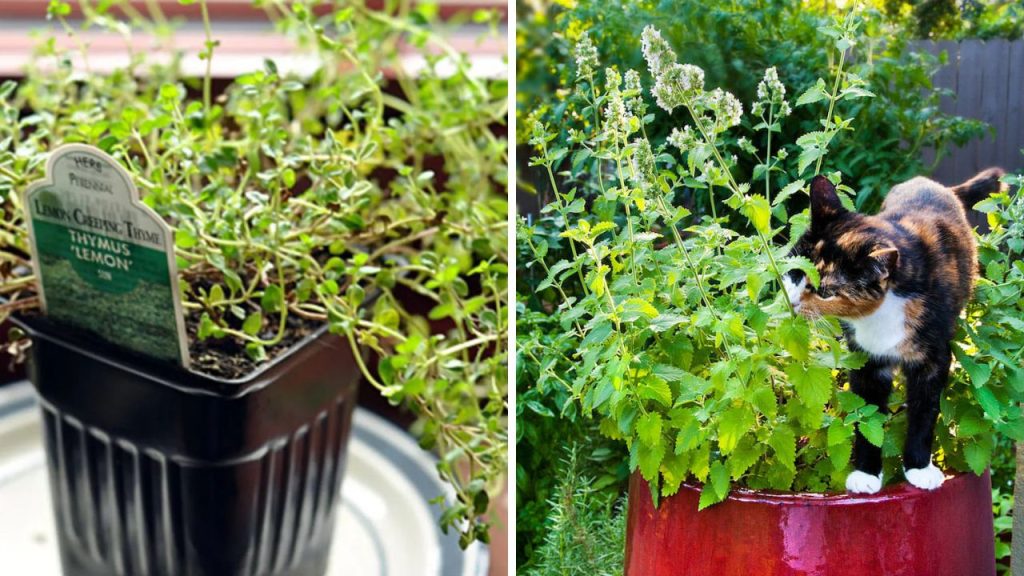Are you ready to transform your backyard, patio, or even your balcony into a vibrant, productive space? Small vegetable gardens are the perfect way to grow fresh, healthy produce right at home. Whether you have limited space or just want a manageable project, these 19 small vegetable garden ideas will help you get started with a beautiful and bountiful garden.
Gardening is a rewarding hobby that offers a sense of accomplishment and provides fresh ingredients for your meals. In this guide, we’ll walk through 19 fantastic small vegetable garden ideas that can suit any lifestyle, with tips on design, planting, and maintaining each setup. Get ready to enjoy homegrown veggies no matter how much space you have.
1. Raised Bed Vegetable Garden
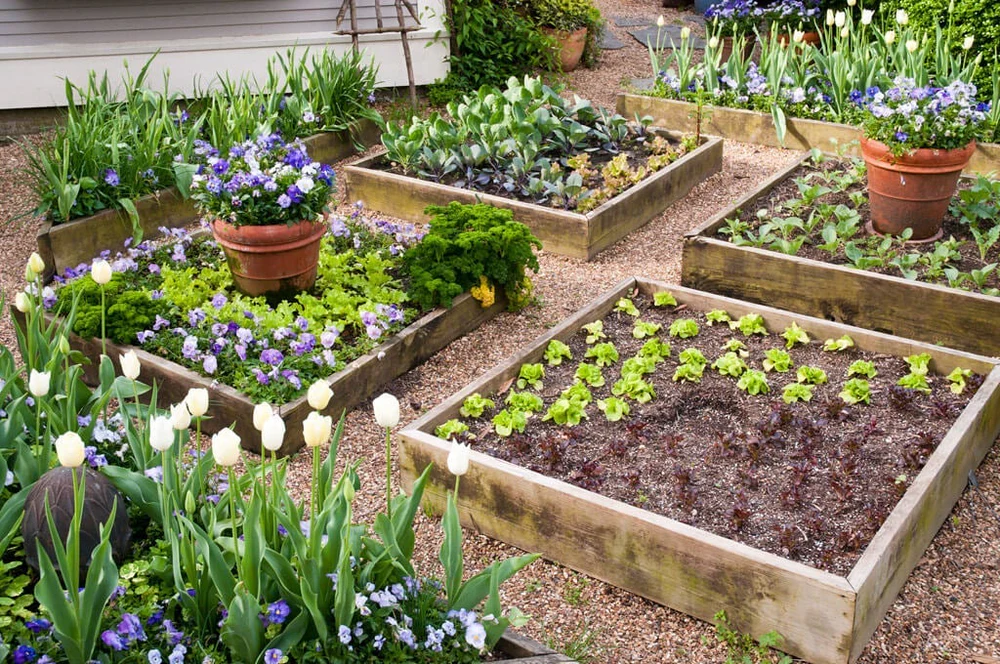
Source
Raised garden beds are a popular choice for small spaces because they offer excellent drainage, easier access, and can be tailored to suit your needs. They are particularly great for growing vegetables like tomatoes, carrots, and peppers, as the controlled environment helps to prevent soil compaction and keeps pests at bay.
By elevating your garden, you can also improve soil quality and avoid back pain from bending down constantly. A raised bed can be built with materials like wood, stone, or even metal, depending on your aesthetic preferences and available space. These gardens work well in backyards, patios, or even rooftops where ground soil might not be ideal for gardening.
Another benefit of raised beds is that they allow you to create smaller plots dedicated to specific vegetables. This makes crop rotation easier, and you can also mix plants to improve pollination. Plus, raised beds are customizable, so you can create garden setups that fit your personal style.
2. Vertical Garden on a Trellis
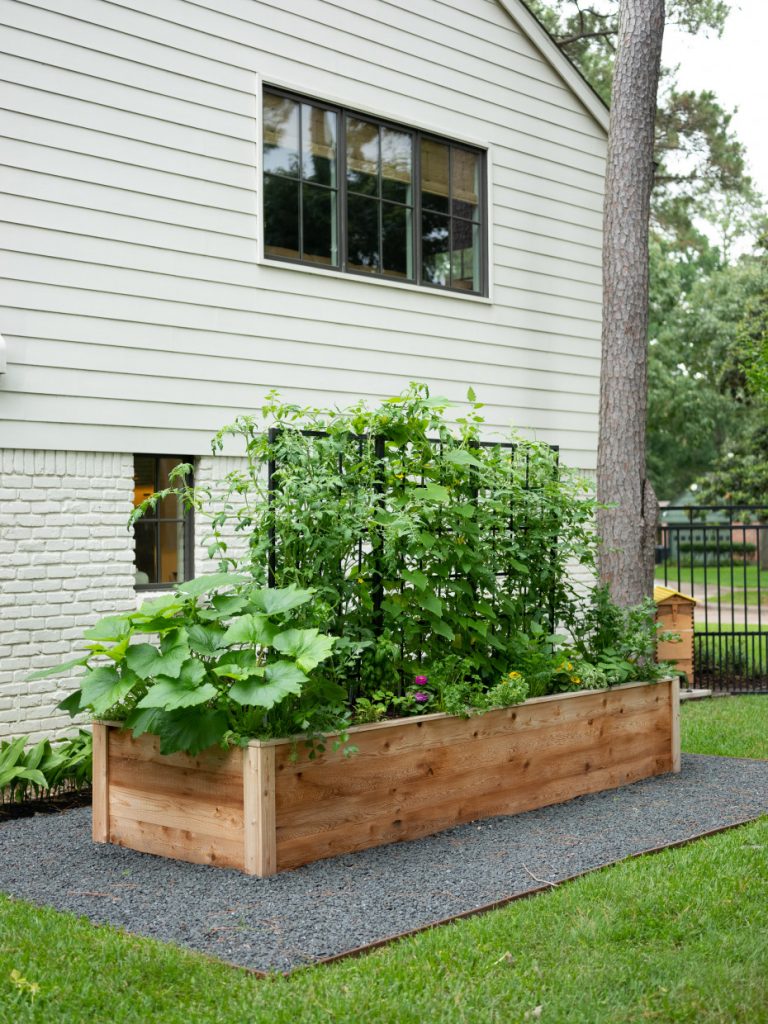
Source
A vertical garden on a trellis is a space-saving solution that allows you to grow climbing vegetables such as cucumbers, beans, and peas. Trellises are a great way to use vertical space in your yard or patio while still getting the benefits of fresh veggies.
This method maximizes your gardening space, allowing you to grow more plants in less area. You can use a variety of materials for your trellis, from wood and wire to repurposed items like ladders or fences. As your plants grow, they’ll naturally climb the structure, keeping the vegetables off the ground and helping them stay healthy.
If you don’t have a backyard or garden, a vertical trellis can also be a great addition to your balcony, porch, or even inside your home if placed near a sunny window. You can hang containers from the trellis or let the plants vine freely. This setup also makes harvesting a breeze, as the vegetables will be easier to reach and inspect.
3. Window Box Vegetable Garden

Source
Window box gardens are an excellent option for apartment dwellers or those with minimal yard space. They provide an opportunity to grow small vegetable varieties, such as herbs, lettuces, and radishes, right outside your window. This allows you to incorporate fresh vegetables into your meals, even in the busiest of cities.
A window box vegetable garden requires minimal space but offers a lot of flexibility in terms of design. These boxes can be mounted on windowsills, railings, or fences, allowing you to use otherwise unused space for growing food. Many window boxes are designed for easy watering and drainage, ensuring that your plants stay healthy.
Choosing the right vegetables for a window box garden is key. Go for shallow-rooted crops like spinach, kale, and small peppers that thrive in containers. Plus, window boxes can be styled to match your home’s exterior, giving your space a charming and rustic look.
4. Indoor Vegetable Garden in Containers
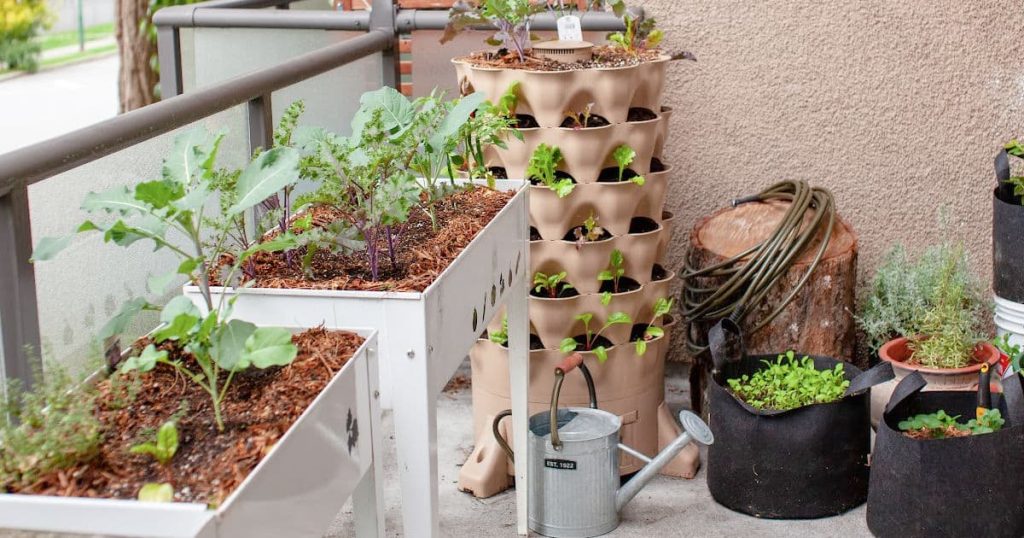
Source
Not all vegetable gardens need to be outdoors. If you’re short on space or live in a colder climate, consider setting up an indoor vegetable garden using containers. This can be done on windowsills, shelves, or countertops where your plants can receive plenty of sunlight.
Popular indoor vegetables to grow include lettuce, spinach, herbs like basil and cilantro, and even dwarf varieties of tomatoes. Indoor gardens offer the advantage of being protected from outdoor pests and extreme weather conditions, making it easier to control the growing environment.
Containers can be anything from traditional flower pots to repurposed containers such as plastic tubs, baskets, or crates. Ensure proper drainage and select containers that match the size of your plants to promote healthy growth. Indoor vegetable gardens are a great way to have fresh produce year-round.
5. Hydroponic Vegetable Garden
Source
Hydroponic gardening is a modern method of growing plants without soil. This technique uses water and a nutrient solution to grow vegetables such as lettuce, tomatoes, and herbs. A hydroponic system can be set up indoors or outdoors, depending on space and environmental factors.
Hydroponic gardens are an excellent choice for those looking for an innovative, soil-free gardening solution. The system uses a water-based growing medium, which eliminates the need for soil, reduces the risk of pests, and maximizes water efficiency. It’s also a great option for small spaces since you can grow vertically or in containers.
While setting up a hydroponic system can be a bit more involved than traditional gardening, the results are well worth it. You can grow vegetables faster and in smaller spaces, making it a fantastic option for urban gardeners.
6. Hanging Basket Garden
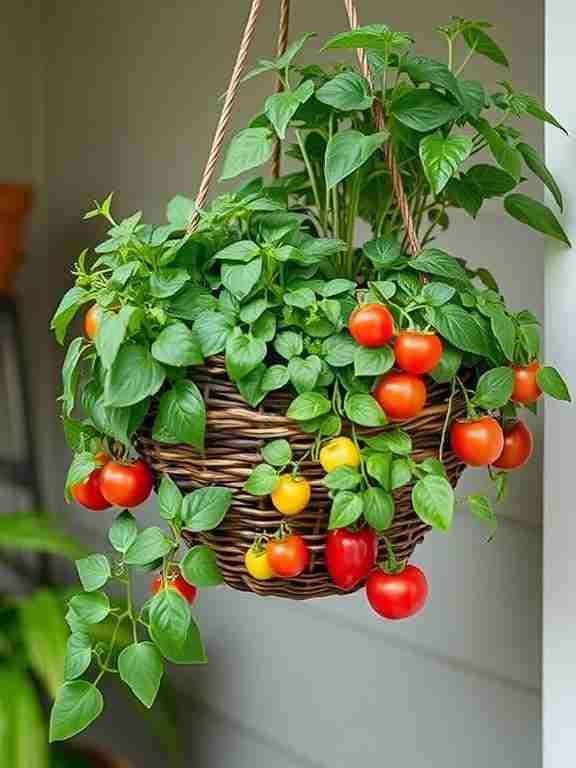
Source
Hanging baskets are a fantastic way to add a touch of greenery to your porch, balcony, or even your kitchen. They are especially great for growing small vegetables, such as herbs, peppers, and dwarf tomato varieties, that don’t require too much space to grow.
These baskets can be hung from ceilings, porches, or hooks on fences or walls, taking advantage of vertical space in a way that’s both efficient and aesthetically pleasing. They also allow you to easily move the baskets to optimize sunlight or protect your plants from extreme weather.
Choose lightweight baskets with good drainage and consider pairing them with compact, space-saving plants. With proper care, your hanging basket garden will provide fresh produce and a beautiful, leafy addition to your space.
7. Patio Vegetable Garden in Pots
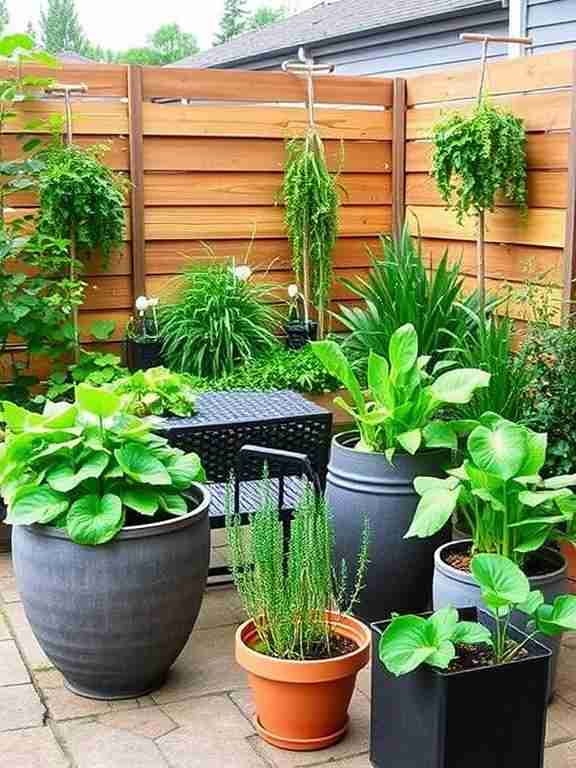
Source
If you have a small patio or deck, you can still enjoy growing vegetables with pots and containers. A patio vegetable garden in pots can be as small or large as you like, and it offers flexibility in terms of placement and design. You can grow anything from leafy greens like lettuce and kale to root vegetables such as carrots and potatoes.
The key to success with a patio garden is selecting the right pots and vegetables. Make sure the containers have sufficient drainage holes to prevent waterlogging and choose pots that are large enough for your plants’ root systems. You can also mix and match different vegetables to create a dynamic, multi-plant garden.
Consider adding some modern patio furniture around your container garden to create a beautiful and functional outdoor space. By integrating your vegetable garden with your patio decor, you can create a relaxing area where you can enjoy homegrown produce.
8. Herb Garden in a Small Space
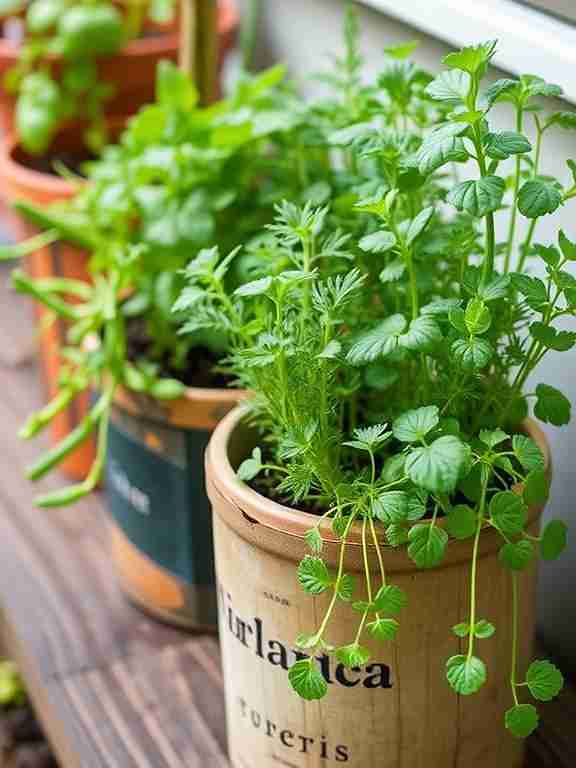
Source
Herb gardens are one of the easiest and most rewarding types of small vegetable gardens you can create. Whether it’s a small section of your backyard, a windowsill, or a container on your balcony, herbs like basil, rosemary, thyme, and parsley can be grown with minimal effort and space.
Herb gardens are perfect for beginners because they don’t require a lot of upkeep. They grow quickly and can be harvested frequently, making them ideal for those who love to cook with fresh ingredients. Plus, they can be grown indoors or outdoors, depending on your available space.
To get started, choose herbs that thrive in your climate and ensure they have access to enough sunlight. Most herbs prefer well-drained soil, so opt for containers or raised beds with good drainage. You can even get creative by planting herbs in recycled items like mason jars, tin cans, or wooden crates.
9. Square Foot Garden
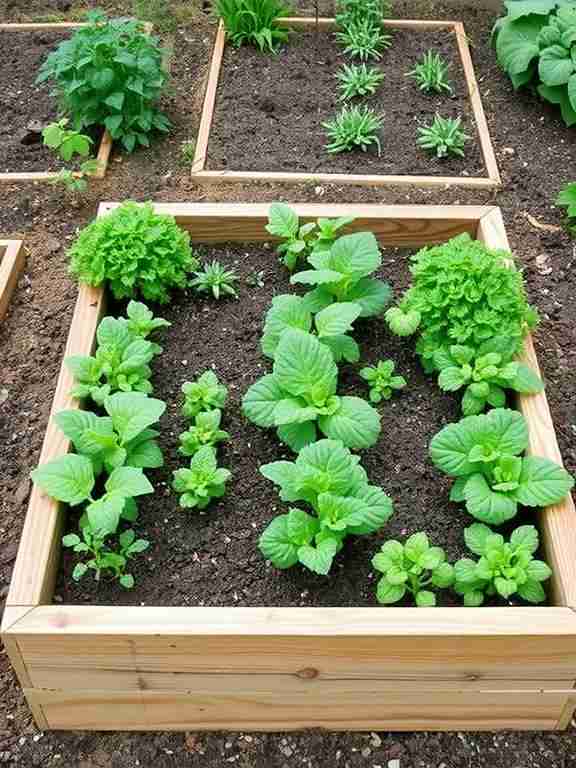
Source
The square foot garden method is perfect for small spaces, as it maximizes your planting area and minimizes the need for constant weeding. This method involves dividing your garden into small 12-inch square sections, each of which is planted with a specific vegetable based on its space requirements.
Square foot gardening works well in raised beds or containers, and it’s a great way to grow a variety of vegetables in limited space. Each square foot can hold a different crop, such as carrots, lettuce, tomatoes, or even small bush beans, allowing you to get a diverse harvest from a single plot.
This gardening method is perfect for those who want a low-maintenance, high-yield garden. The small, defined sections make it easy to manage and provide excellent results. Plus, it reduces the need for fertilizers and pesticides, making it an eco-friendly gardening choice.
10. Community Garden Plot

Source
If you don’t have the space to start a vegetable garden at home, consider renting a plot at a community garden. Community gardens are becoming increasingly popular in urban areas, and they offer a great opportunity to grow vegetables without needing a large yard.
These shared spaces are typically divided into individual plots that you can cultivate as you wish. They’re ideal for beginners because they often come with support and advice from fellow gardeners. Plus, community gardens foster a sense of connection and collaboration, making gardening a more social and enjoyable experience.
Community garden plots usually have a low rental fee and access to water, tools, and other resources, making them a cost-effective way to grow your own vegetables. Plus, you can enjoy the benefits of fresh produce while contributing to your local community’s sustainability efforts.
11. Greenhouse Vegetable Garden
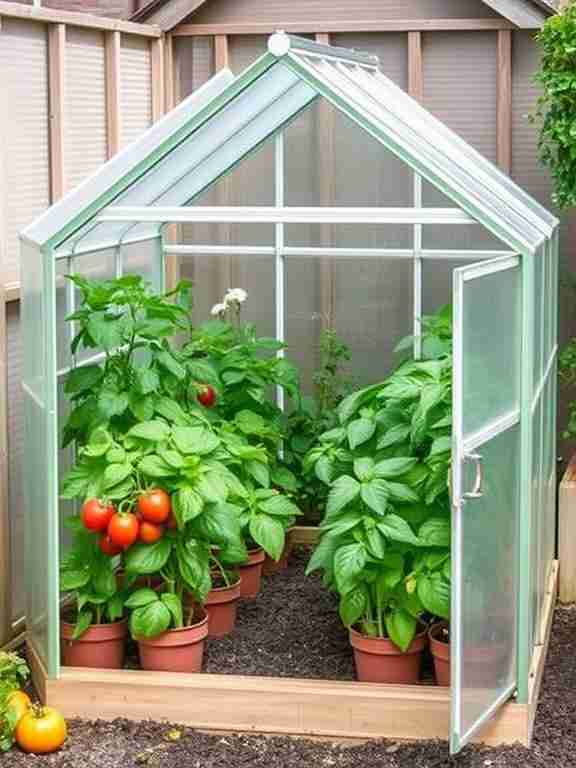
Source
A small greenhouse is an excellent way to extend your growing season and protect your vegetables from the elements. If you have a little extra space in your backyard or on a patio, a small greenhouse can be a perfect addition for growing vegetables year-round, even in colder climates.
Greenhouses offer controlled environments, which means you can regulate the temperature, humidity, and light exposure for your plants. This is particularly beneficial for crops like tomatoes, peppers, and herbs that thrive in warm conditions. Greenhouses also provide protection from pests and wildlife, which is especially important if you’re growing vegetables in urban or suburban areas.
The size of your greenhouse will depend on your available space and needs. Small, portable greenhouses can be set up in a corner of your yard or on a balcony, while larger structures might require a bit more room. No matter the size, a greenhouse vegetable garden offers the advantage of being able to grow vegetables in any season, giving you access to fresh produce year-round.
12. Straw Bale Garden

Source
Straw bale gardening is a unique and eco-friendly gardening technique that uses bales of straw as both the planting medium and the structure of the garden. It’s a fantastic option for those with poor soil or limited space, as it requires minimal setup and yields great results.
Straw bales act as an excellent growing medium because they provide good drainage, retain moisture, and offer a soft environment for roots to grow. This method is particularly effective for growing vegetables like tomatoes, peppers, and squash, which need ample space for their roots to spread.
To get started, simply place the bales in a sunny location, and after conditioning them for a few weeks with water and fertilizer, you can begin planting your vegetables directly into the bales. Straw bale gardening requires less weeding and is much easier on your back, as the bales are elevated and reduce the need for bending down.
13. Spiral Herb and Vegetable Garden
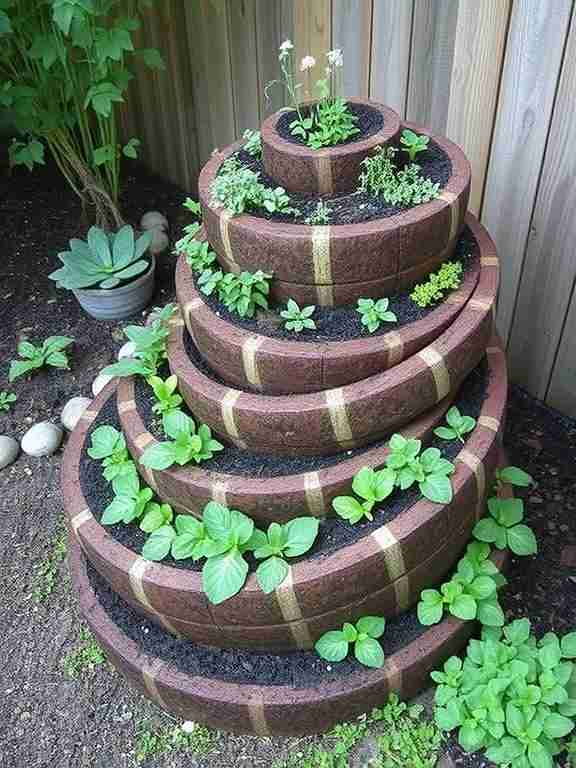
Source
A spiral herb and vegetable garden is a creative and visually stunning option for small spaces. By stacking soil in a spiral pattern, you create different growing zones that allow you to plant vegetables with different sunlight and watering needs.
This design not only maximizes your available space but also creates a beautiful garden feature. The spiral shape allows you to grow a variety of vegetables, from herbs at the top of the spiral (which require the most sun) to leafy greens and root vegetables at the bottom (which do well with less direct sunlight).
Spiral gardens are also excellent for conserving water. As water flows down the spiral, it naturally irrigates the plants in the lower sections, which helps reduce waste and ensures that all plants are adequately hydrated. This method is perfect for those who want to add a touch of charm and practicality to their vegetable garden.
14. Edible Fence Garden
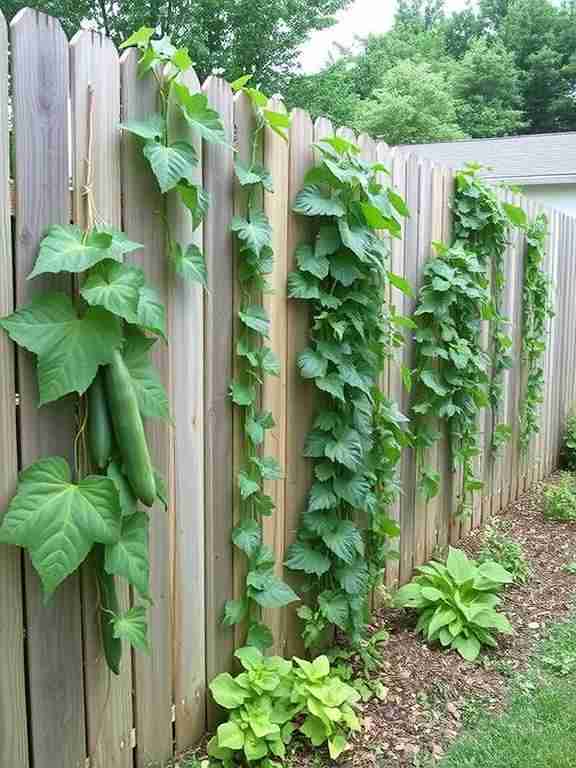
Source
Why not make your fence both functional and beautiful? An edible fence garden involves growing vegetables along the perimeter of your yard or garden, utilizing the fence to support climbing plants like beans, cucumbers, and peas.
This type of garden is perfect for urban areas where you may not have much room for traditional garden beds. You can grow vertically and take advantage of your fence’s height to support climbing plants, which helps save ground space for other crops. Not only will your garden look visually interesting, but it will also be a productive space that gives you easy access to fresh, homegrown veggies.
Edible fences are great for adding layers to your garden’s design. You can incorporate ornamental elements, like flowers or colorful vegetables, for a more aesthetically pleasing look. This method is simple, efficient, and an excellent use of vertical space.
15. Grow Bags Vegetable Garden
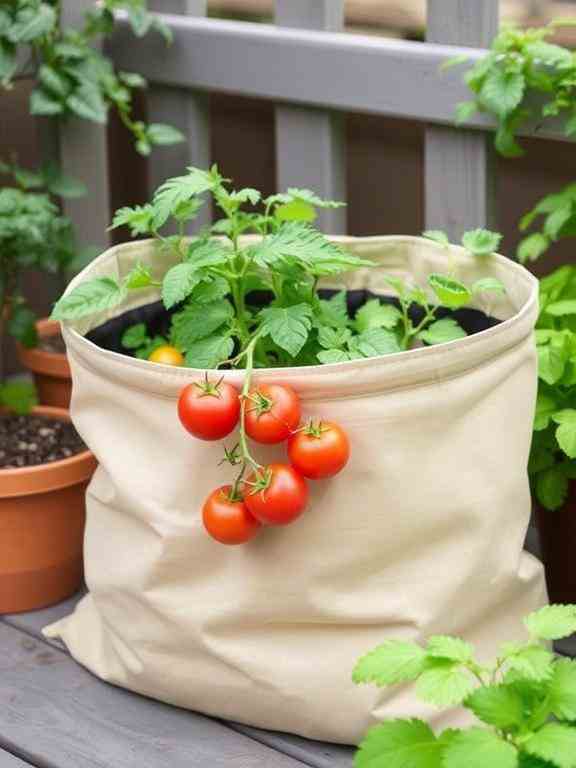
Source
Grow bags are a fantastic way to grow vegetables in small spaces, particularly on patios, decks, or balconies. These fabric containers are available in various sizes, making them suitable for a wide range of vegetables like tomatoes, potatoes, and beans.
One of the key benefits of grow bags is their portability. You can easily move the bags around to follow the sun or to protect plants from harsh weather conditions. Additionally, the breathable fabric of grow bags encourages healthy root growth by providing adequate air circulation, preventing root rot and waterlogging.
Grow bags also make gardening more accessible for people who have limited space. They can be used on balconies, rooftops, or even in your garage, allowing you to grow fresh produce in the smallest of areas. When it’s time to harvest, simply move the bags to a flat surface, and you’ll have easy access to your veggies.
16. Container Herb and Vegetable Garden
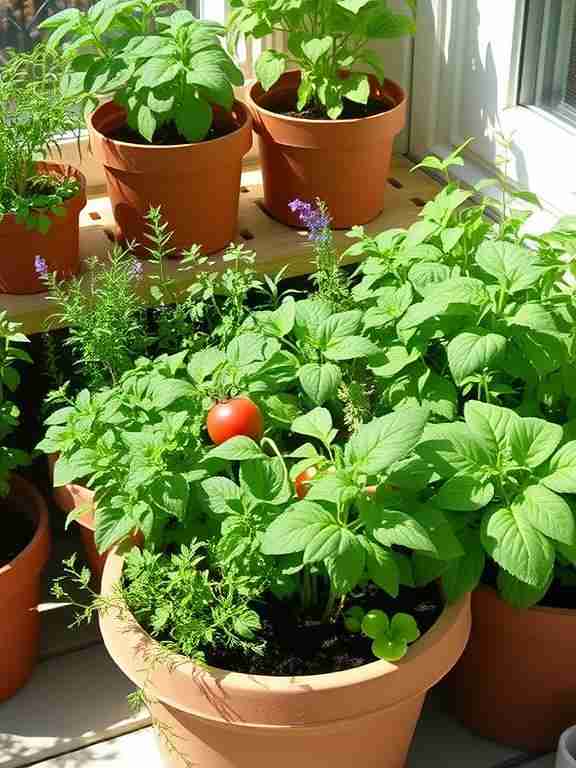
Source
If you have a small balcony, patio, or even a sunny kitchen counter, a container herb and vegetable garden is an ideal choice. Using containers, you can grow a variety of vegetables and herbs without requiring much space. These gardens are highly versatile, allowing you to plant tomatoes, lettuce, cucumbers, and herbs in various-sized pots, depending on what works best for each plant.
Container gardens are perfect for those with limited ground space. You can arrange your containers to create an appealing and efficient layout, placing your plants wherever they will get the most sunlight. Since containers can be moved around, you can experiment with different placements to find the perfect environment for each plant.
The key to a successful container garden is choosing the right pots with proper drainage. You should also select compact vegetable varieties that can thrive in confined spaces, such as bush tomatoes, dwarf beans, or compact zucchini.
17. Food Forest in a Small Space

Source
Creating a small food forest is an exciting and sustainable way to grow food in your garden. A food forest mimics a natural forest ecosystem by layering different types of plants to create a diverse, self-sustaining environment. This method works exceptionally well for small spaces because it makes use of both horizontal and vertical layers, maximizing the use of available space.
In a food forest, you can plant fruit trees, shrubs, perennial vegetables, and ground cover plants. Each layer works in harmony with the others, providing mutual benefits like shade, shelter, and pest control. For example, the taller trees provide shade for smaller plants, and the ground cover helps to suppress weeds and retain moisture.
This gardening technique is low-maintenance and promotes biodiversity, making it ideal for those who want to grow food in a sustainable and environmentally friendly way. While food forests require some initial planning, they can yield a wide variety of produce throughout the year, reducing the need for store-bought vegetables.
18. Keyhole Garden
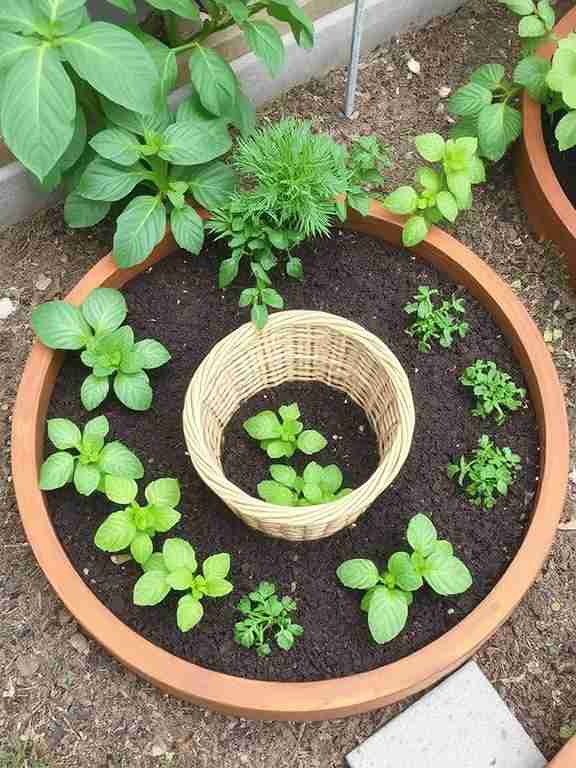
Source
A keyhole garden is a unique and efficient gardening method that is ideal for small spaces. Named after its keyhole shape, this type of garden is designed to maximize space and water retention, making it perfect for growing vegetables in limited areas.
Keyhole gardens are built in a circular shape, with a composting basket at the center. The shape of the garden allows for easy access to all areas, and the compost basket provides nutrients to the soil as it decomposes. This setup is ideal for growing a variety of vegetables, including leafy greens, root crops, and small fruiting plants.
The keyhole garden method helps conserve water by directing it towards the center of the bed, where the plants can access it efficiently. This makes it a water-saving solution that is especially useful in areas with water restrictions or hot climates.
19. Urban Greenhouse in a Shipping Container
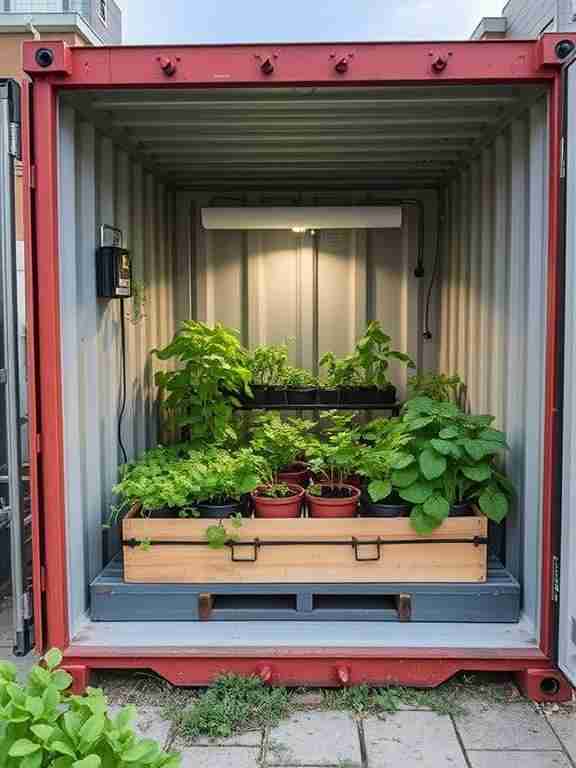
Source
For those with limited space and a desire for a more advanced gardening project, transforming a shipping container into a small urban greenhouse can be a game-changer. These containers provide a controlled environment for growing vegetables year-round, protecting them from the elements and pests.
Shipping container greenhouses are typically equipped with systems for ventilation, irrigation, and temperature control, which makes it easier to grow a variety of vegetables, from leafy greens to tomatoes and peppers. These containers can be placed in your backyard or on a rooftop, depending on your available space.
This type of gardening solution is ideal for urban dwellers who want to grow a lot of produce in a compact area. The insulation of the container helps maintain a consistent temperature, and you can maximize the use of the space by layering your plants vertically or using hydroponic systems.
Conclusion
No matter how small your space is, there are plenty of ways to create a productive vegetable garden that will provide you with fresh, homegrown produce. Whether you opt for a compact container garden or a vertical trellis, each of these small vegetable garden ideas can help you maximize your growing area and enjoy the rewards of gardening.
By choosing the right setup based on your space and lifestyle, you can enjoy gardening year-round and have access to healthy, homegrown vegetables at your fingertips. So, roll up your sleeves and start planning your garden today—it’s time to bring the farm to your backyard!
